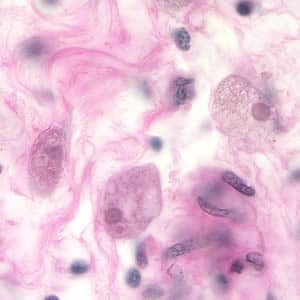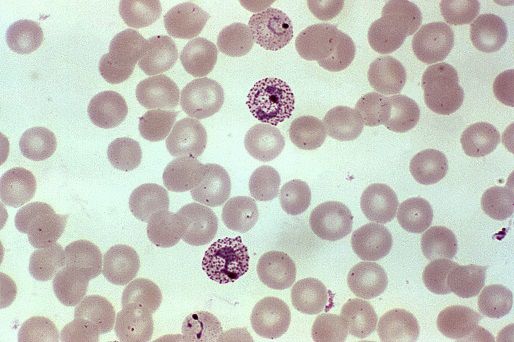what do single celled organisms need to survive
An organism is i which lives an independent life.
Single-cell organisms are quite interesting in that with a unmarried cell, they perform the entire activities.
There are some billions of cells in the human trunk that brand up tissues and farther organs to part.
In a single-jail cell organism, the jail cell is and so designed to carry out all the life activities with it.
However, in that location are few important modifications that make information technology sustain so well.
Unmarried-Celled Organisms
Protozoa

These are the eukaryotic cells that live mostly in water. It can be freshwater or marine water but very rarely in soil or land. They are many types of protozoa and some are free-living while others deed as parasites. Some of them fifty-fifty crusade severe diseases in humans.
They generally consist of a plasma membrane, nucleus, mitochondria, vesicles, flagella, cilia and other cell organelles. Though almost of them free living, they become their nutrient from external sources. They swallow up bacteria and other organic affair.
Examples include Amoeba, euglena, paramecium.
Parasites include: Entamoeba, plasmodium
Bacteria
These are prokaryotic single-celled organisms. They are said to be omnipresent. They are establish in h2o, soil, air and fifty-fifty in extreme climates similar estrus and cold. There are many disease-causing bacteria and have been affecting humans for centuries. These bacteria have the ability to derive free energy from multiple sources. Some of them are parasites, some saprophytes, autotrophs and even chemotrophs.

Examples include East-coli, staphylococcus bacteria, salmonella typhi, pseudomonas aerogenosa etc.
Archaea
These are some other set of prokaryotes that significantly differ from bacteria. There are anaerobic organisms which means they alive in areas with no oxygen. They are found in harsh climates like hot springs, saltwater. Besides they are also found in soils and oceans.
Single-celled parasite
A parasite is an organism that survives on another organism and derives nutrition and other requirements for living at the expense of the host.
Hence, the host organism suffers due to the parasite attack on it.
There are many types of parasites based on their preferences, modes of transmission, etc.
But those with shape and structure are quite interesting.
Few of the Microorganisms are the parasites which have small structure. They can be either single-celled or multi-celled parasites. Only in this article, nosotros volition see the list of single-celled parasites and their behaviors.
These unmarried-celled parasites are mostly either protozoa or bacteria. They cause diseases to humans, animals, and plants. They are widely present across all parts of the world and can also get epidemic at a time leading to mass infections and deaths.
They can gain entry into humans through food, water, air and by contact. Inside the humans and other organisms, they live by feeding the tissues, cells and other essentials and multiply rapidly leading to sickness, diseases in the host. If not controlled, they can sometimes atomic number 82 to the death of the host.
Examples of the single-celled parasite in humans and their features
1. Protozoan unmarried-celled parasite
Protozoans exist as parasites in the human trunk. Some of them stay for a very long time in the body without existence noticed except for minute wellness bug. Case includes
Entameba histolytica
This a common pathogenic protozoan that relies on the human intestine for a long time. Information technology tin also pass on to other body organs like the liver, heart and even brain. In the intestine, it causes symptoms like pain, mucus stools, etc.

Just if the population is more, the hurting can be severe and demand medical attention. Since it is an amoeba, it is chosen a shape altering single-celled parasite.
Toxoplasma gonodi
This is an interesting protozoan that exists in the blood of man transmitted from cat through food and h2o contamination. Information technology almost shows negligible symptoms in man for a very long time. And it is said to infect one-half of the homo population in the world.
It reproduces in cat and spread mostly by improperly cooked meat, dairy products, etc.

Malaria is a highly contagious protozoan parasite transmitted to humans by the female Anopheles mosquito (insect). They are of 4 types of parasites as plasmodium vivox, falciparum, malaria and ovale. The symptoms of infection include repeated brusk duration fevers, chills, headaches, etc. If the parasite life cycle is not controlled by drug treatment, information technology leads to death.
In the year 2016, there were 216 million cases of malaria infection worldwide of which 445,000 people died. In the United States each twelvemonth there are approximately 1,700 cases of diagnosed with malaria especially amid tourists.
Cryptosporidium is another protozoan that infects animals and humans. It is by and large transmitted by water. It causes diarrhea equally it lives in the intestine.
Giardia is a ciliated protozoan parasite that causes giardiasis. It is spread by contaminated drinking h2o.
Leishmaniasis is a flagellate protozoan parasitic spread by the bite of a sandfly. The mutual symptoms are which causes pare sores, mucous ulcers in the olfactory organ, mouth, fever, anemia, liver, spleen and os marrow damage.
Balantidium coli is a ciliated protozoan parasite. It infects the intestines of humans. Information technology is transmitted through the contaminated nutrient and water. Symptoms include abdominal pain and diarrhea
two. Bacteria parasites
A parasite is i that stays in the host torso and cannot alive on its ain without a host. But, most bacteria can exist grown in lab cultures out of the host. So they are not classified as parasites but as pathogens. Nonetheless, few bacteria are not grown in lab cultures making them classified as a parasite.
Mycobacterium leprae: This is a dreaded leaner equally per the world health organisation and it has threatened the hereafter beingness of flesh in the past. This is a bacteria that can easily spread from an infected person to another only by air through salivary aerosol.
These bacteria once entered into the human will stay in the torso for a lifetime. However, information technology is discovered that these leaner have lost the capacity to be grown in lab cultures. This is because their metabolic arrangement is completely changed to just survive in the host.
Source: https://www.studyread.com/single-celled-organisms/
0 Response to "what do single celled organisms need to survive"
Post a Comment